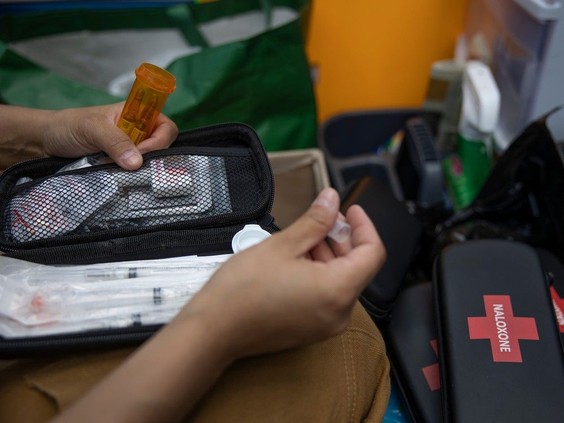
by Larissa Kurz and Alec Salloum
Regina Leader-Post
A recent spate of overdose deaths in Regina has put the spotlight back on the overdose crisis being felt across the province.
Saskatchewan has seen a significant rise in the recorded number of overdose deaths in the last three years, with a record-setting 408 drug toxicity deaths confirmed in 2021 and another 378 in 2022.
Most recent data from the Saskatchewan Coroners’ Service reports that there have been 263 suspected and confirmed drug toxicity deaths in the province so far in 2023, a potential trajectory described as “concerning” by the coroner’s office.
The Regina Police Service has recorded 84 overdose deaths already this year, compared to 71 in the same time frame last year. Twelve have happened since the start of July, one of which was a resident staying in the encampment in front of city hall Wednesday.
That loss was one of three suspected overdose fatalities to happen in Regina within a 24-hour period. Émile Gariépy, harm reduction manager at the Newo Yotina Friendship Centre, said since the camp popped up some five weeks ago he’s seen a decrease in the number of people using the harm reduction site.
“Most of my clients specifically have gone to city central. It’s been a ghost town in here since they set up the tent city downtown. Obviously, they’re feeding them and taking care of them over there but a couple venture over here everyone in a while,” said Gariépy on Thursday.
Since the camp started Gariépy says he has not had an overdose at the safe consumption site, but, when asked the camp and its ability to keep people safe he said there were pitfalls in how it is organized.
“They’re comfortable in a tent, it’s like their house and that’s where they’re getting high,” he said. “That makes it harder to check on people and make sure people are using safely.”
Before the camp Gariépy said he would see an average of 15 to 20 people at the site on any given day. Now he sees around five to 10.
The Friendship Centre has a mass spectrometer which can test and assess the purity of drugs. Last week Gariépy had a client report their drugs were particularly potent.
“It came back 30 to 35 per cent fentanyl in that sample and normally we’d see anywhere between five to 15 per cent,” he said. “That would have been last week.”
Regina Police declined to speculate on the current toxicity of the illicit drug supply in the city, but advised that anecdotally, there have been several incidents lately that required “multiple doses” of naloxone to counteract an overdose. A spokesperson said that could be due to a number of factors, including but not limited to potency.
Chief coroner Clive Weighill warned earlier this year that there has been an increasing presence of the opioid in the illicit drug supply since 2015. Fentanyl was present in nearly two-thirds of overdoses in 2021 and more than half in 2022.
Asked if the uptick in deaths can be attributed to a tainted or stronger supply, Gariépy said it’s hard to say. There’s a considerable amount of the opioid in the city, with variance in colour, potency and properties.
“I can’t really for sure say which fentanyl is killing the people until someone’s like ‘hey, this is the fentanyl we had taken off one of the bodies, could you test it to see what it is?’ Or something like that,” he said.
The provincial coroner’s office indicates that of the 68 drug-toxicity fatalities that have been confirmed this year, fentanyl was present in 48 of those incidents.
Minister Gene Makowsky said social services workers are making themselves available to camp residents twice weekly, to facilitate intakes to housing supports, income assistance and detox referrals — a decrease in presence from the outset of camp’s formation, as uptake “wasn’t very high.”
“That’s part of the complexity and the challenges we’re dealing with,” said the minister.
Calls to provide more low-barrier housing options and addictions treatment spaces are being heard, he added, but take time to develop.
“Some solutions aren’t right there,” he said, adding that these are “not things you can bring together tomorrow.”
He feels the ministry is providing all the support it can at this time, and is “working very hard” at finding solutions with partners, including the city.

